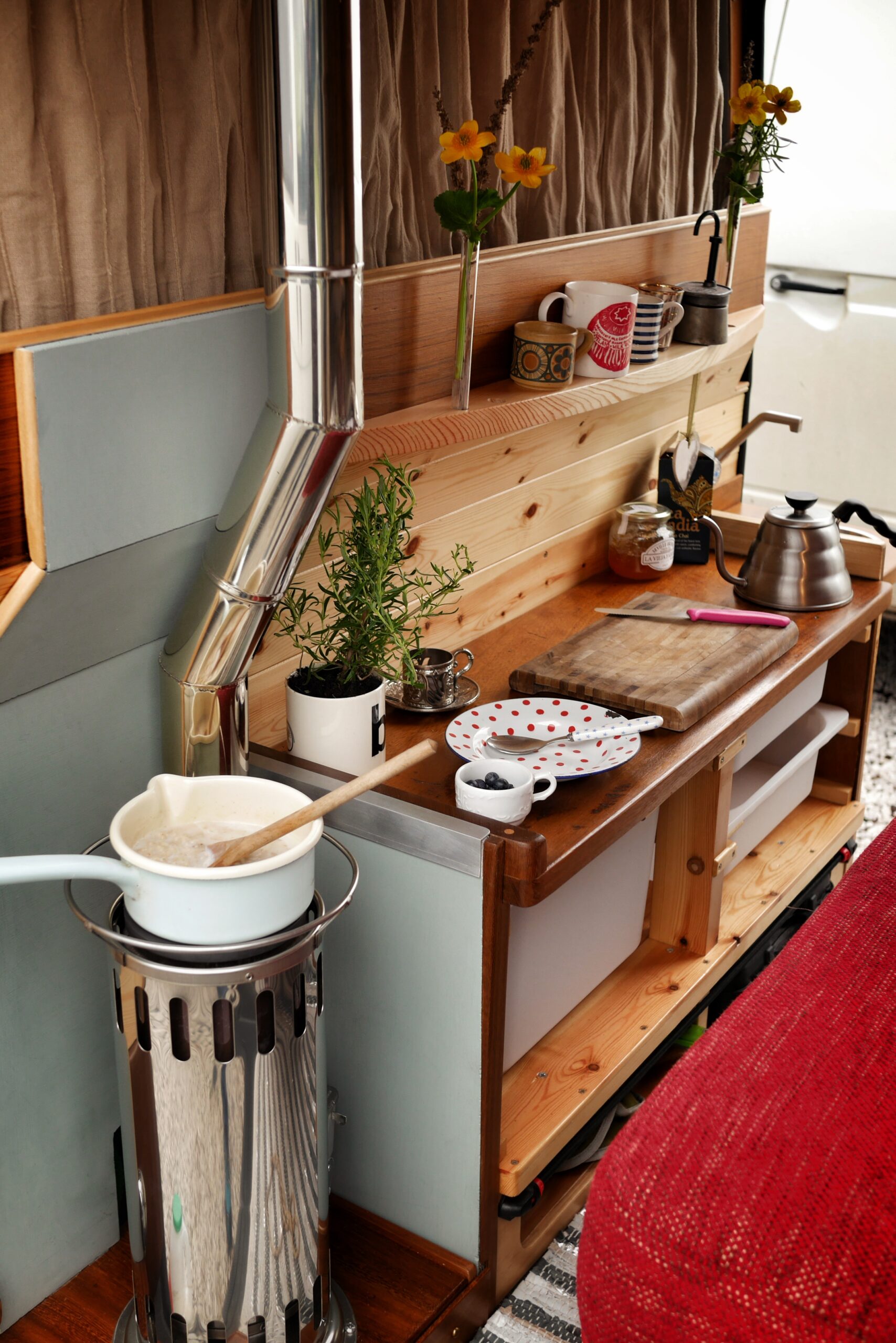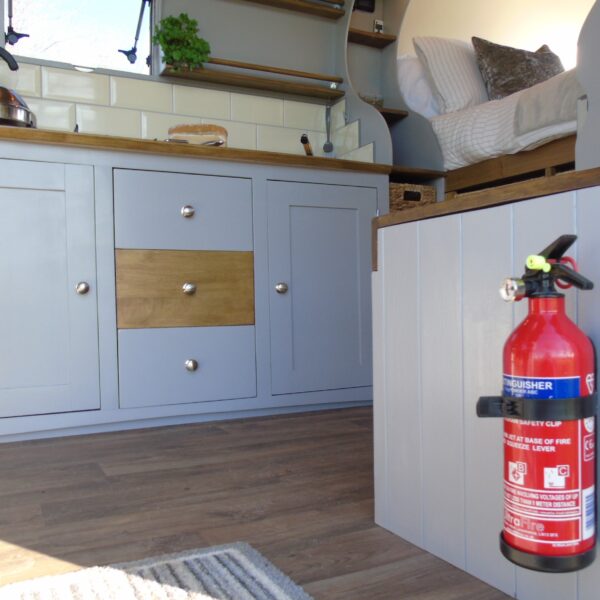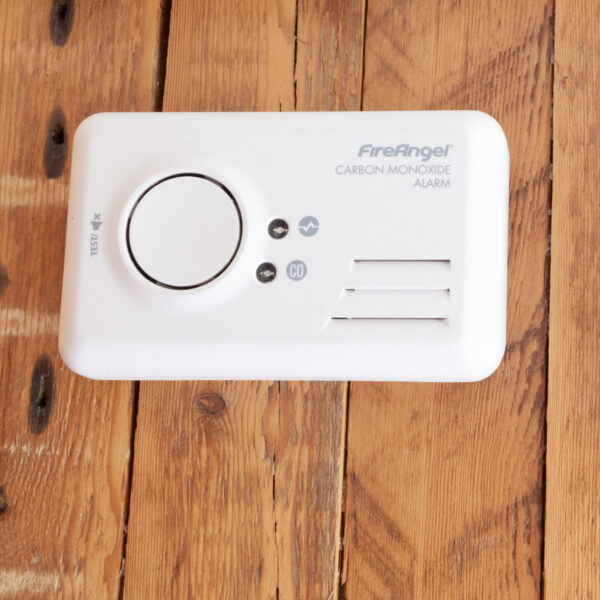Home » What Type of Heating Should I Install in My Campervan?
What Type of Heating Should I Install in My Campervan?
What to consider when thinking about heating for you campervan
Campervans can be as luxurious as you want to make them, but they rarely come with central heating. One of the most common questions people ask is “what are the campervan heating options, and which should I choose?”
When considering campervan heating options there are typically three main types in the running – diesel, wood, and gas. Whilst other types of heating are available (e.g. portable heaters or space heaters), these three are the ones typically opted for when installing in a campervan.
The main things you will need to consider when deciding what is the right campervan heating option for you are:
- The size of your van
- Ease of obtaining replacement fuel sources
- Cost of installation
- Maintenance costs
- Fuel costs
Diesel Heating in a Campervan
Diesel heaters use the fuel from the vehicle’s main diesel tank and the leisure battery or electric source to power the unit. They are often popular in larger vehicles as you can get integrated systems for both hot air and hot water. This is really useful if you are camping all year round and fancy a hot shower!
As a very rough guide, a typical diesel heater requires 0.1 litres diesel per hour. It is important to note that the heater only uses fuel when combustion is in process.
The thermostatic controls and fan need 12v electricity. The consumption depends on the heating power needed and the type of heater; as a ballpark guide it’s 10 to 50w. The user manual will inform you of the lowest wattage your electrical input must be at in order for the heating to work.
Most diesel (and gas) heaters use a heat exchanger to warm the air, this is then blown round the vehicle using a 12v fan. The air needed for both combustion and exhaust are piped directly from outside into the sealed combustion chamber and back out again without entering the vehicle itself. As always it is very important to ensure that safety requirements are adhered to when installing. (See the safety section of this blog!)
Pros of diesel heating in campervans
- Extremely reliable
- Operate well in low temperatures (quite a big benefit!)
- Unlikely to run out of fuel due to accurate internal fuel gauge
- Easy to locate replacement fuel abroad
- Relatively low running costs for both the electric and fuel requirements
- Can be mounted outside of the vehicle, saving space inside
- Short time needed to heat the van (provided you fitted the right KW output in relation to vehicle size)
- Can regulate the temperature with a thermostat
Cons of diesel heating in campervans
- Running the heating system can be noisy (for your outside neighbours)
- An older heater or one that is not well maintained can emit fumes
- They (typically) use more electric consumption than a gas heater. This can be off-set if you have solar panels
- Expensive to buy; Webasto heaters can cost from £800 – £2000 depending on the KW output.
- Alternative models such as this one are becoming more popular but beware the danger of buying from abroad if fitting yourself. You could find you need to figure out how to translate a lot of Chinese instructions…
- You can find reconditioned models from £450
- They do need to be serviced and maintained regularly
Previous Quirky Camper’s Owner Simon solved a lot of these issues by installing a completely different type of diesel stove in his Mercedes Vito campervan conversion. It’s called a Refleks 66MK – it looks a lot like a wood burner but in fact acts more like an AGA and comes with a handy stealth mode!

Wood Burning Stove in A Campervan
There’s something beautiful and romantic about the vision of a wood burner in any abode. Just because you’re in a campervan as opposed to some Scandinavian log cabin absolutely doesn’t mean you can’t join in that vision!
As with any heating system you must adhere to the relevant regulation. Our recommendation is that you speak to a HETAS qualified installer before embarking on an installation yourself. This is particularly relevant as the required ventilation is calculated on HETAS’ regulations.
What KW output of stove should you get? That’s a really hard question to answer. It depends on the cubic space of your van empty. As a rule of thumb, divide the cubic space by 14 and this will give you a KW output needed for the space. So, for an average sized van* a 2kw burner would be perfectly adequate. The smallest of the wonderful Anevay Stoves is the The Shepherd Stove at 1.7 kw and go up from there.
*For the purposes of this blog, average could be considered to be VW T5 size.
One of the main benefits about wood burners is their sheer simplicity; get wood, light fire, enjoy heat. Once they’re in, they’re in and you don’t need to maintain them apart from keeping them clean and clear of ash. They are without a doubt the most cosy and atmospheric heating option, and can double up as a cooking source as well.
It’s a legal requirement that you don’t have flammable materials next to your stove. That means wood and hardboard must be kept well away, which can be effectively and stylishly done in the main body of the van. If you have any wood in the ceiling, you may need to consider a twin-walled flue – please research this thoroughly before you put the hole in the roof!
Pros of wood burner heating in campervans
- Cheap to purchase – £100 – £300 for a 2kw unit is typical
- Fuel is cheap. Wood can be scavenged or you can buy a full crate of logs (1.26m x 1.14m x 1.04m) for £150 – £250 from online retailers (you will need to find somewhere to store this many logs!)
- Quiet to run
- Exceptionally cosy
- Easy to maintain – nothing electrical to go wrong!
- Dry heat output – excellent for drying out clothes and boots
Cons of wood burner heating in campervans
- Can be smelly for inexpert fire-makers!
- You will need to find storage space for kindling/wood – an underslung wood store is unlikely to be the next Dragon’s Den investment
- Some insurers don’t cover for fire if caused by a solid fuel heater so check with them before you commit
- Some campsites (very few in our experience) will not allow you to light up a wood burner
- A smaller unit will require refuelling more frequently so may burn out in the night
- A larger unit might produce far too much heat for the size of van and you’ll find yourself stripping off in the depths of Winter!
- Complex safety regulations to comply with (OK not so much a con as a necessity but it’s worth mentioning because there are a lot!)
Making and maintaining a fire is a real art form and whilst you’re learning this Neanderthal skill, be prepared for some smoky nights and stinky clothes!
One way of future proofing an expensive initial purchase is to buy as high-efficiency stove as possible. The cleaner the air, the less particulate filters, so you are more likely to comply with potential future new laws.
It’s worth noting that not every burner needs to be shop-bought; Bella’s owners handmade theirs from a reclaimed gas cylinder and a garden fork!
The best way to know for sure, is to take someone else’s away for a romantic weekend and see if it matches your imagination!

Gas Heating in Campervan
Campervan diesel heaters blow heated air around the van through dedicated vents. This campervan heating option is fuelled by gas cannisters or a tank which can be internally or externally mounted. It isn’t as sexy as a wood burner but its efficiency and ease of use make it a really popular choice for a lot of people.
Most heaters of this type operate on a thermostatic control, so will maintain an ambient temperature and reignite automatically when they are required. This is particularly useful overnight to avoid waking up to an ice box and a frozen nose!
The cost can vary hugely on this type of heating, depending on whether or not you opt for an underslung LPG Auto tank or an internal Butane bottle. An underslung tank with filling point, regulator and indicator level can set you back between £500 – £1000. However a great benefit is you aren’t taking up space inside your van. The refill point (also on the outside) is universal in the EU and the UK and generally much cheaper per litre than bottled gas. An internal cylinder is much cheaper to install, but you may need to change the connector whilst abroad. If you are doing a lot of colder climate trips these will run out quicker, but it might not be practical to carry a spare.
For the heaters themselves, the cost again can vary. Propex gas heaters are one of the most popular choices. These come with a bit of a brand name price tag – for instance a HS2000 will set you back around £480.

The cost to run is not so bad. It normally costs around £15-£25 to refill a 20 litre underslung tank which depending on use would need to be refilled once a month. The manufacturer’s estimate that running the HS2000 uses approximately 142g gas / hour to heat an average sized van. That is a pretty cost effective way to heat your camper!
As with anything involving gas, you will need your work signed off by a registered gas safety engineer; if you are intending to rent it out, this needs to be a landlords certificate. For information see our blog on getting your get installation signed off for renting out your vehicle.
Pros of gas heating in campervans
- Efficient to run
- Easy to locate fuel to refill (if using auto-gas)
- Controlled via thermostat
- Inexpensive fuel source (mostly!)
- You can leave it on overnight
- Quick to heat the air to required temperature
- When using propane gas, this operates in very, very cold temperatures!
Cons of gas heating in campervans
- The fan can be noisy inside the van, though this can be improved with sound muffling ducting.
- If you don’t accurately measure the required ventilation for the cubic metre space of your EMPTY van (i.e. without units or appliances) you may end up needing to put in retrospective ventilation.
- Can be very expensive to purchase an underslung unit and the cheaper internal tanks have a much smaller capacity.
Safety First
Irrespective of whether or not your plan is to rent out your campervan with Quirky Campers there are some super important things that, frankly, we would consider a no-brainer to include in your build.
For example, if you’ve got a naked flame in a small area with a lot of wood, please install a fire extinguisher!

If gas is going to be running at any time, a Carbon Monoxide alarm is a must!

If you are planning on generating extra income by hiring out your campervan, you will need a Landlord’s gas safety certificate. We’ve already written some handy hints on this, as well as the other things to consider when converting to hire.
So which heating system should you install?
In much the same way that people will enthusiastically claim that the milk should go in first when making a cup of tea, (these people are wrong, incidentally) or vice versa, there really is no right answer. It’s personal preference based on research and circumstance!
One thing we can probably all agree on is that sleeping in a cosy van is preferable to a soggy and chilly night under canvas. The fact that most of our vans have heating is a great reason to take one away for a break, whatever the weather. If you’re in the process of choosing your campervan heating system, why not take a few on a weekend test drive and pick the brains of our experienced owners.




